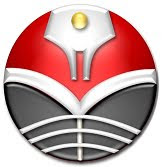Valuing Children’s Literature
Student ID : 0708004
Children's literature is any literature that is enjoyed by children. More specifically, children's literature comprises those books written and published for young people who are not yet interested in adult literature or who may not possess the reading skills or developmental understandings necessary for its perusal. In addition to books, children's literature also includes magazines intended for pre-adult audiences.
The age range for children's literature is from infancy through the stage of early adolescence, which roughly coincides with the chronological ages of twelve through fourteen. Between that literature most appropriate for children and that most appropriate for adults lies young adult literature. Usually young adult literature is more mature in content and more complex in literary structure than children's literature.
Most of the literary genres of adult literature appear in children's literature as well. Fiction in its various forms–contemporary realism, fantasy and historical fiction, poetry, folk tales, legends, myths, and epics–all have their counterparts in children's literature. Nonfiction for children includes books about the arts and humanities; the social, physical, biological, and earth sciences; and biography and autobiography. In addition, children's books may take the form of picture books in which visual and verbal texts form an interconnected whole. Picture books for children include storybooks, alphabet books, counting books, wordless books, and concept books.
I found some example of children and Adolescent’s literature in this chapter.
Children’s Literature:
1. The Velveteen Rabbit, by: Margery William’s
2. Winnie The Pooh, by: A. A. Milne
3. Peter Pan, by: J. M. Barrie
4. The Three Musketeers, by: Aleixandre Dumas
Adult’s Literature:
1. To Kill a Mockingbird, by: Harper Lee
2. All Creatures Great and Small, by: James Herriot
3. Speak, by: Laurie Halse Anderson
4. Harry Potter, by: J. K. Rowling
5. Chronicles of Narnia, by: C. S. Lewis
Evaluating children books criteria:
- Plot
- Setting
- Theme
- Characterization
- Style
- Point of view
- Illustration
- Format
- Comparison to others
Those committed to an understanding and appreciation of young adult literature should be able to:
- Describe the historical development, current trends, and enduring characteristics of young adult literature.
- Identify current reading, viewing, and listening interests of young adults and incorporate these findings into collection development and program planning.
- Apply factual and interpretive information on adolescent psychology, growth and development, sociology, and popular culture in planning for materials and services for young adults.
- Recognize literary elements in story and apply critical judgments to selected literature.
- Use Reader-Response, Feminist and other literary theories in work with young adult literature.
- Interpret current research on young adult reading, information needs, and library usage and apply it to selecting materials for young adults.
- Provide a variety of information services (e.g., information referral, crisis intervention counseling, etc.) to meet the diverse needs of young adults.
- Select and use appropriate tools in collection building and user guidance; analyze and criticize the usefulness of the tools in terms of coverage, cost, and special features.
- Devise and publicize pathfinders, book lists, displays, etc., which will ease access to collections and motivate use.
- Develop a materials collection for young adults which includes all appropriate formats, using a broad range of selection sources.









0 Response to "Valuing Children’s Literature"
Post a Comment